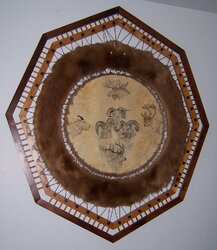BeGreen said:
They are probably already there. Many think the Eastern coyote is a cross with the Red Wolf.
"A study showed that of 100 coyotes collected in Maine, 22 had half or more wolf ancestry, and one was 89 percent wolf. A theory has been proposed that the large eastern coyotes in Canada are actually hybrids of the smaller western coyotes and wolves that met and mated decades ago as the coyotes moved toward New England from their earlier western ranges.[23] Ontario Ministry of Natural Resources research scientist Brent Patterson has revealed findings that most coyotes in Eastern Ontario are wolf-coyote hybrids and that the Eastern wolves in Algonquin Park are, in general, not inter-breeding with coyotes.[29]
The Red Wolf is thought by certain scientists to be in fact a wolf/coyote hybrid rather than a unique species. Strong evidence for hybridization was found through genetic testing, which showed that red wolves have only 5% of their alleles unique from either gray wolves or coyotes. Genetic distance calculations have indicated that red wolves are intermediate between coyotes and gray wolves, and that they bear great similarity to wolf/coyote hybrids in southern Quebec and Minnesota. Analyses of mitochondrial DNA showed that existing red wolf populations are predominantly coyote in origin.[30]"
http://en.wikipedia.org/wiki/Coyote
Matt




 But, big business corporate America unfortunately dictates what remove the beavers morally, ethically, and all the BS. Last thing we want is PETA all over us.
But, big business corporate America unfortunately dictates what remove the beavers morally, ethically, and all the BS. Last thing we want is PETA all over us.